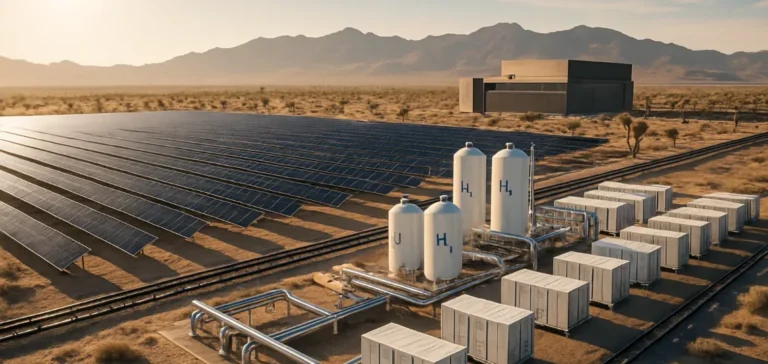Cadiz Inc., a US company specialising in land and energy development, has signed a Memorandum of Understanding (MOU) with UK-based Hoku Energy Limited to develop an energy campus over more than 10,000 acres at Cadiz Ranch, located in California’s Mojave Desert. This partnership represents the second major agreement Cadiz has concluded within the past year, following a previous deal with RIC Energy regarding an adjacent site dedicated to green hydrogen.
Specific content of the agreement
The memorandum of understanding provides Hoku Energy with an exclusive three-year option to explore and develop various energy infrastructures. Planned facilities include green hydrogen production units, solar and low-carbon power plants, large-scale battery storage systems, and digital infrastructure such as data centres.
Additionally, the agreement specifically includes the possibility of constructing another data centre on a 400-acre area reserved by Cadiz, with Hoku Energy having a priority right to supply the necessary power for this project. The deal does not restrict existing developments planned by Cadiz, including the Mojave Groundwater Bank, a significant water resource management facility.
A clearly defined long-term strategy
According to Susan Kennedy, Chair of Cadiz Inc.’s Board of Directors, “The collaboration with Hoku Energy represents a key milestone in our company’s long-term land use strategy.” She further added that this initiative fully aligns with Cadiz’s objective of effectively utilising its land assets for large-scale energy and water projects in California and the American Southwest.
Cadiz executives estimate that various projects developed on the ranch will generate between $7mn and $10mn in annual revenue through leases and water resource sales.
Logistical advantages and joint projects
Cadiz Ranch already benefits from integrated infrastructures, including rail access and corridors dedicated to water and energy pipelines. These logistical advantages significantly facilitate the implementation of large-scale projects combining renewable energy production, green hydrogen, and digital infrastructure.
Together, the collaborations with Hoku Energy and RIC Energy will position Cadiz Ranch among the largest clean energy campuses and green hydrogen production centres in North America. Cadiz Inc. stated that the full details of this agreement are available in an official filing submitted to the Securities and Exchange Commission (SEC) as a Form 8-K report.






















